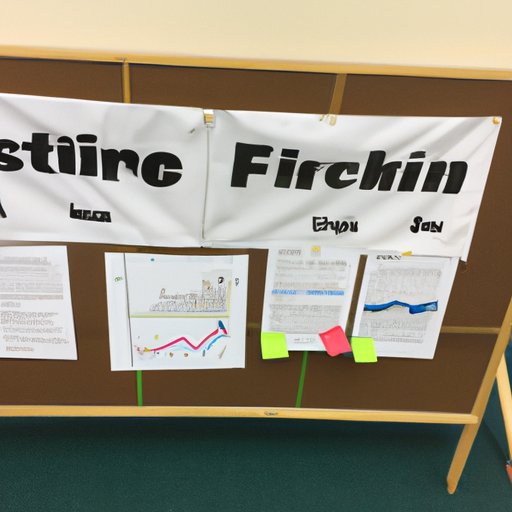Introduction
A science fair board is a visual display that provides information about your project or experiment. It typically includes a title, purpose of the project, hypothesis, materials, procedure, data, results, conclusion and other relevant topics. Setting up a science fair board can be an important part of presenting your science project, as it serves as a visual representation of your research and findings.
Outline the Steps
To create a successful science fair board, there are several steps you need to take. First, you will need to gather all the materials needed. This may include poster boards, markers, tape, scissors, glue sticks, and other items depending on what type of visuals you want to include.
Once you have all the materials, you can begin to set up your board. The first step is to create a title for your project. Make sure the title is descriptive and clearly states what your project is about. You should also include your name, school and grade level.
Next, you will need to outline the purpose of your project and the hypothesis you tested. This should be explained in an easy-to-understand way so that anyone reading your board can understand what your project was about.
After that, list the materials used in your experiment and the procedure you followed. Be sure to include any diagrams or pictures that illustrate the process. This will help viewers better understand the steps taken during your experiment.
Next, include your data and results. Include any charts, graphs, or other visuals that help explain your findings. Finally, write a conclusion summarizing the results of your experiment and any implications they may have.
Visuals
Including visuals on your science fair board can help make it more eye-catching and engaging. Pictures of the materials used in the experiment, diagrams illustrating the procedure, and videos of the experiment in action are all great ways to add visual interest to your board.
You can also use colors to make your board stand out. Stick to a few colors that complement each other and use them throughout the board to give it a cohesive look. For example, you could use blue and green for the background and text, and yellow and red for the visuals.
Tips & Tricks
When setting up your science fair board, there are some helpful tips and tricks to keep in mind. One important tip is to keep it simple. Don’t overwhelm your board with too much information; instead, focus on the key points and use visuals to supplement the text.
It’s also important to make sure your board is organized. Use headings and subheadings to break up the information and make it easier to read. Additionally, make sure to double-check your spelling and grammar before presenting your board.
Interviews
If you’re still feeling unsure about how to set up your science fair board, you could always reach out to someone who has done it before. Ask them about their experience and see if they have any advice or tips they can share with you.
For example, according to a study published in Science Education International, “Experienced science teachers reported that they had developed various strategies over time to create visually appealing science fair displays. These included adding color and graphics, using props, and providing an interactive element such as a demonstration or game.”
Examples
There are many different types of science fair boards you can create. Some common examples include poster boards, tri-fold boards, and bulletin boards. Depending on the type of project, you may want to use one of these formats or create something completely unique.
No matter which type of board you choose, the most important thing is to make sure it is well-organized and visually appealing. Consider adding photos, diagrams, and other visuals to make it interesting.
Conclusion
Creating a successful science fair board can be a daunting task, but it doesn’t have to be. By following the steps outlined above and incorporating visuals, interviews and examples, you can create a science fair board that accurately reflects your project and impresses the judges.
(Note: Is this article not meeting your expectations? Do you have knowledge or insights to share? Unlock new opportunities and expand your reach by joining our authors team. Click Registration to join us and share your expertise with our readers.)
